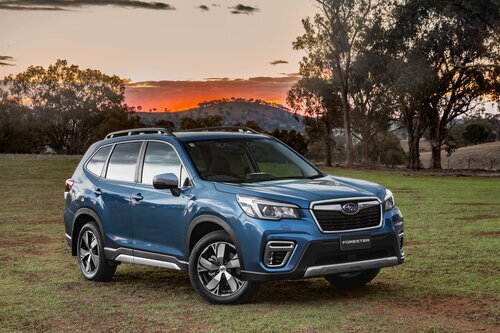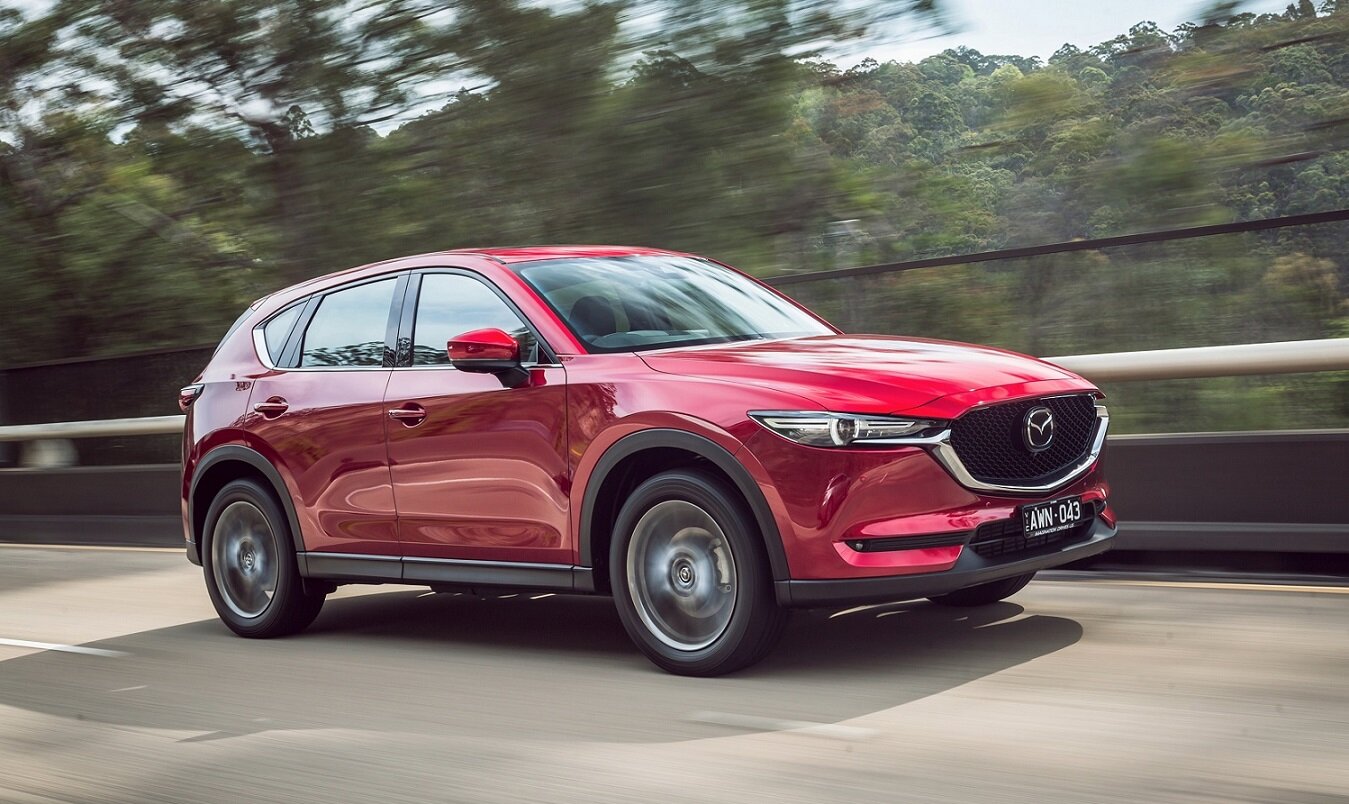Cylinder deactivation: How, why and should you own a car with this tech?
Should you avoid buying a recalled engine like Mazda’s SkyActiv 2.5 simply because it has cylinder shutdown tech?
Cylinder deactivation takes multiple engine cylinders out of play at low loads (by closing the valves and turning the injectors off). It saves a small amount of fuel when cruising on the highway.
But Mazda's cylinder deactivation tech on the 2.5 SKYACTIV gasoline engine was the subject of a major recall in the US (and here in Australia). So, is buying a CX-5, Mazda3 or Mazda6 with this engine a mistake in 2021 or 2022?
Let’s answer exactly this question, from a guy names Geoff who contacted me as a result of his search for his next new car, having stopped to watch my takedown report of Australia’s most obsolete motoring publication and its Car of the Year ‘award’.
Having commenced his research, Geoff explains:
New Tucson could be pretty hard to find at the moment, especially the 1.6T, thanks to the semiconductor computer chip shortage >>
I’d suggest waiting until later in the year, if you can, for the new Kia Sportage to arrive (pandemic permitting). Side-by-side the Sportage and Tucson are two different vehicles built on the same platform and will have generally the same proportions. You can simply choose which one you like the best.
There’s also the Subaru Forester in this category and Mazda CX-5 as well, both of which are very good vehicles with generally good customer service, reliability and performance. Although the 2.5 turbo-petrol CX-5 beats Forester for straight-line acceleration and overall luxury, whereas the Subaru with symmetrical AWD and 220mm ground clearance is the superior vehicle for living in rural or regional areas where conditions might go from ‘good’ to ‘good-God’ overnight.
In principle, I agree, complexity is the enemy of reliability, and the only thing stopping you from having a reliability problem in your next new car is a bunch of automotive engineers either doing a very good or a poor job. But what really matters is whether they got the R&D right and if the carmaker’s accountants didn’t undermine their own engineers.
Car company accountants are very good at saving one cent on a single part, which, multiplied by 1 million cars, saves $10,000; multiplied by the 10,000 parts on each car, for a global mass-market brand’s portfolio selling 100 million vehicles, saves $100 million that can be tipped back into marketing or CEO bonuses or further R&D. (It depends on how the company likes to spend its money, obviously.)
But there is a point where a carmaker can get a reliability disaster if one of those cheaper parts has a flaw.
Exactly how that ‘back pressure problem’ is going to happen doesn’t make sense to me, Geoff.
The Mazda engine with direct injection is the 2.5 turbo-petrol SkyActiv powertrain with cylinder deactivation.
Direct injection works like this: there’s a pipe, knowns as a ‘fuel rail’, maintained under constant pressure at around 300 or 400 BAR, and the injector behaves like a tap that opens four or five or six times during each combustion cycle and squirts a little spray of fuel into the cylinder.
Having a cylinder deactivated and a tap shut on the injector is not going to having any impact on the pressure inside the fuel rail. Watch Mazda’s Cylinder Deactivation in action here >>
And cylinder deactivation is only designed to happen when the engine is at very low loads (eg. on the freeways with low throttle percentage). In this state, the engine is not particularly volumetrically efficient at low revs (because it’s designed to be more efficient at higher revs to deliver more power).
Taking two cylinders out of play, shutdown cylinders 1 and 4 in Mazda’s case, the cylinder is closed off, piston is still moving up and down but doing no work, the injector is turned off - and all this increases the volumetric efficiency of the two cylinders that are still working because the load is low.
How? All the injectors do is open and close, the oil pump is still presurising, oil is still flowing, the cylinder bores are still lubricated, so there’s no ‘additional’ cylinder lubrication, it’s just the same as before, but there’s no fuel going in.
What happens is the engine control computer measures the conditions, and it sends a message to the hydraulic valve lifters on the valve system for (cylinders 1 and 4) and it collapses the lifters. Everything still moving is still lubricated.
And just for clarity, Mazda Canada in the Cylinder Deactivation video linked to above, Mazda Canada says oil consumption does not increase:
PCV and lubrication systems enable us to take advantage of the reduced fuel consumption afforded by cylinder deactivation technology without increasing oil consumption.
-Mazda Canada
Another comment in the same video asks if additional load is created by the vacuum of cylinders 1 and 4 being inoperable, to which Mazda says:
No vacuum is created. The valve operation is temporarily canceled during cylinder deactivation. At this time the cylinder is full of fresh air. When compressed, the air pressure in the de-activated cylinders pushes the pistons downward by acting as an “air spring”. This helps prevents the crankshaft from losing momentum and promotes smother powertrain operation.
-Mazda Canada
Absolutely, there was a recall in the United States, and here in Australia. In the US the recall involved about a quarter of a million 2018-2019 vehicles, including CX-5, Mazda6 and Mazda3.
You can find the Mazda US recall notice for SKyActiv cylinder deactivation here >>
The Australian version of that Mazda recall is on the Product Safety website here >>
The recall noticed specifically says the Power-Control-Module:
may cause an Intake Valve Rocker Arm to move out of position and make contact with other internal engine parts
-Mazda recall notice, July 2019
This defect affected only 18,719 cars and only related to that batch, which doesn’t really compare to the 25,000 CX-5s, 25,000 Mazda 3s and 2,600 Mazda 6s which is a small number compared the more than 100,000 vehicles they sold in total in 2018-19.
If you went back in time, most models are subject to some kind of recall and it is absolutely a mistake to damn the rest of the breed, even to the ones that have been recalled and fixed. Recalls and how the media blow it >>
Recalls are an example of the manufacturer getting on the front foot and taking a reputational hit in order to do the right thing. I don’t see this as a reason not to buy the Mazda 2.5 SkyActiv engine in whichever model.
USEFUL LINKS FOR BUYING A NEW CAR RIGHT NOW
How to get out of any new car deal with minimal financial pain >>
New car stock shortages: Discounting? What should you do?
Discounting dead: Is this the end for negotiating on a new car? >>
My AutoExpert AFFORDABLE ROADSIDE ASSISTANCE PACKAGE
If you’re sick of paying through the neck for roadside assistance I’ve teamed up with 24/7 to offer AutoExpert readers nationwide roadside assistance from just $69 annually, plus there’s NO JOINING FEE
Full details here >>
Reason to buy or not buy Mazda’s SkyActiv
Geoff wants to know how happy he’ll be with this technology long-term.
Is it worth excluding a Mazda 2.5 turbo-petrol engine because it has had a recall, or because it has cylinder deactivation at all? He intends to live with this powertrain for a long time:
This technology, the cylinder deactivation, is kinda just tech for tech’s sake. Sure, it works, but the Mazda CX-5, Mazda 3 and Mazda 6 are already quite reliable vehicles and the SkyActiv engine is fixed (the dodgy batch has been, anyway).
I don’t see why you would bother buying the performance-oriented 2.5 turbo engine if you’re spending $40-$50,000 on such a vehicle just to save a trivial amount on fuel. Don’t strike it off your list for having that tech (because it does work fine), just don’t hinge your expectations on this idea that it’ll save you large amounts of fuel or money, because you’ll never notice.
How much fuel does ignition stop-start really save >>
Perhaps just think or it in terms of an emissions reduction every time it engages; you’re producing half the amount of CO2 for the same driving conditions, so air quality will benefit.
If you’re looking for a reason not to buy the vehicle, you might warrant investigating the ACCC’s federal court case against Mazda Australia for allegedly unconscionable conduct and whether they’re dealing with customers better in the future.
But don’t write the 2.5 SkyActiv engine itself off, it’s not a reason to not buy one.
























A Kia Stonic is the next big thing in SUVs if you’re looking for modest size but with all the benefits of a normal hatchback. It’s safe, economical and affordable, making it an ideal first car.